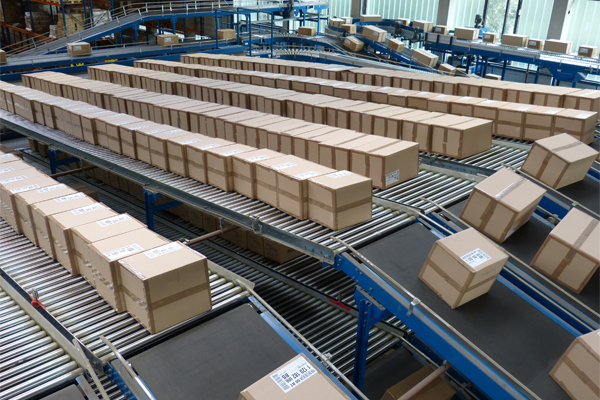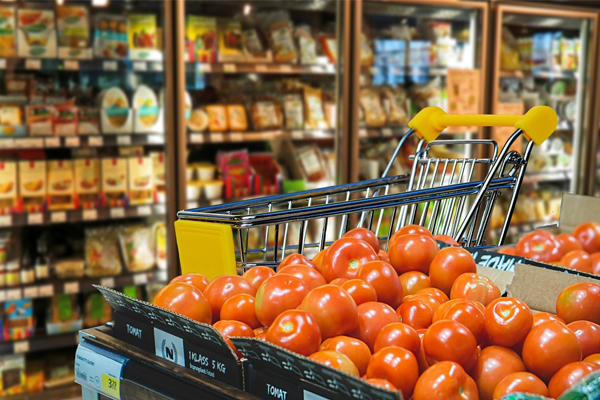What has the response been like in terms of supply and logistics? Which weaknesses have surfaced? What are the challenges facing us in the post-Covid era? We’ll attempt to answer these and other questions with Ramón García, Director of Innovation and Projects at the CEL (Spanish Logistics Centre), and Pedro Gil, Director of Transport for the Día Group.
Unexpectedly, within a matter of days, the industry has witnessed three scenarios, with sectors that have had their activity completely paralysed, those that have adapted and redirected their businesses towards manufacturing products designed to mitigate the health crisis and, finally, those that have increased their activity. Each of them has experienced different problems.
The first group, beyond the employment-related consequences such as the furlough schemes stemming from the cessation of activity, has encountered problems related to overstocking and surplus inventories that have had to be managed on an ad hoc basis, with the resulting difficulty of the associated costs.
On the other hand, the industry that has increased its activity, chiefly focused on the healthcare supply chain, has had to fulfil orders far in excess of its forecasts. One example is the demand for surgical gowns and face masks in Spain following the arrival of Covid, which multiplied by 3,000. Finally, sectors such as the food industry and e-commerce have increased their activity and have logically focused on supplying basic needs. The increased demand has, in turn, led to longer delivery times for customers, as well as stock-outs in some cases. One significant factor is that the demand for products via e-commerce has multiplied by between five and eight in the food segment, in addition to the fact that the habit of purchasing food products online was not previously a well-established practice in Spain, and this has also influenced the whole process.
All the scenarios have a common denominator, namely that this global crisis has had a direct impact on the entire supply and logistics chain, but the experts we’ve talked to say that the industry has responded very competently and met expectations.
Adaptation to change, essential within a context of uncertainty
Regardless of the sector, the new state of affairs brought about by Covid has proved to be a great test for the industry. Ramón García, Director of Innovation and Projects at the CEL (Spanish Logistics Centre), highlights the degree of digitisation and the planning tools used by companies as determining factors when it comes to coping with this new situation. Companies that had already developed a consolidated omni-channel strategy have adapted to the changes of the new context much better. In this regard, the CEL spokesperson underlines the importance assumed by the online channel, as well as the hybridisation used by companies and department stores that have efficiently combined their in-store preparation platforms, the online channel and hybrid deliveries with services such as the click&car format launched by distributors such as El Corte Inglés, consisting of collecting orders previously placed online from physical stores.

Día supermarkets have also made changes to their stores in order to meet the high demand and ensure the greatest possible supplies. In this respect, Pedro Gil, Director of Transport for the Día Group, explains the conversion of some physical stores into “dark stores”, in other words, order preparation centres. In keeping with the above, when asked about the measures taken by the distribution group to cope with the logistical complexity, Pedro Gil lists four points that he regards as basic, including collaborative logistics with other shippers who have suffered a fall in activity, continuous contact with the administrations for the granting of exemptions from the usual restrictions concerning weights, sizes, driving hours and the expiry of documents, increased transport and warehouse resources and flexibility in the reception and delivery schedules.

According to the CEL spokesperson, there’s a widespread impression that logistics only refers to storage and transport, but it’s taking on a much more complex and key role for the sector, and not only in periods such as the present one. “Logistics is the intelligence that ensures products and services exist when they need to exist and are where they need to be“, states García, who also believes that the sector has demonstrated its capacity for planning, re-planning and adaptation during the crisis. In this regard, García points not only to the processes in the supply chain itself but also to the complexity that teleworking has brought to a highly inter-connected and inter-dependent sector with a great need for systems with remote access, with the security risks that the above entails.
However, certain weaknesses have also emerged in this new scenario. In the field of transport, it has become clear that there were previously no efficient platforms for suitably balancing out resources between the different sectors due to a lack of prior knowledge. For example, there have been cases of carriers that have ceased their activity and could have provided services to other companies that needed them. What we can gather from these case studies is that there aren’t enough communication channels and collaborative platforms to make the resources visible and accessible.
Challenges and opportunities in the reinvention of the immediate future
There are several unknown factors with regard to what’s going to happen from now onwards, but also lots of opportunities to rethink how to improve the processes and the logistics chain. The concepts of health and safety will continue to be major issues in the coming months. In this respect, the Día Group’s spokesperson considers that PPE, which should never be neglected, will become particularly significant. “All the processes are being revised with a view to reducing physical contact with customers, guaranteeing the cleaning and disinfection of products and making the different forms of delivery more flexible. It will be also be necessary to design specific areas for people to move around or stand in at facilities to guarantee the minimum needs, together with medical inspections of the entire chain, which will have to take place more regularly “, conclude Gil.
At the same time, due to the safety measures being taken that are set to continue in the coming months, the usual activities of the logistical process are expected to slow down, a trend that will have a direct impact on the sector. The CEL spokesman wonders what percentage of businesses will continue their activity after this stoppage, which has lasted nearly three months. García provides some data in this regard: “In Spain, more than 60% of transport companies are made up of self-employed workers, and this group is particularly vulnerable following the downturn in activity we’ve witnessed. If we focus on the Horeca channel, we can see that three months of a standstill without any activity has left these establishments in a difficult situation as far as business is concerned, and it remains to be seen who survives“. Gil warns that “we may find ourselves with a shortage of drivers, because the self-employed ones who’ve seen their income fall may have moved on to other sectors of the economy with a higher level of activity, especially the primary sector, and the fall in the number of transport companies will aggravate this problem“.

With regard to e-commerce, the CEL’s Director of Innovation and Projects expects activity to double in comparison with pre-crisis figures (from about 5% to 10%) and he emphasises that the logistics processes of e-commerce platforms are different from those of physical stores and that it will be necessary to continue preparing for the above. Furthermore, he draws attention to an issue that will change when normal traffic is resumed and we return to commercial activity at full capacity: “We’ll see how transport evolves, because deliveries in the city during the lockdown have been very streamlined but the panorama will change” he declares.
The expert states that “we’ll have to analyse the impact of the decline of the Horeca channel, given that, before the arrival of Covid, it was the recipient of four out of every ten deliveries in the city while e-commerce accounted for one, but some estimates indicate that between 20% and 40% of the channel won’t re-open“. At the same time, he explains that “the use of private vehicles is being encouraged, which will lead to greater traffic congestion, together with the fact that there’ll be more home deliveries, so it’ll be a more capillarised process than a few months ago, and this will have direct consequences on logistics“.

García offers a diagnosis: “we’re going to have to reinvent deliveries by implementing more collaborative platforms and creating standards to unify criteria, especially in the last mile, during which we must share resources and put in place alternative solutions such as lockers, urban hubs and other options like lorry-sharing“. “This is a challenge that we must address in a systemic way, because the city is an ecosystem and logistics are the veins of this ecosystem and, if there’s one good thing that will come out of this crisis, it’s that the vital role of logistics has been highlighted and acknowledged. It’s been and it will be a good time to attract talent with very diverse profiles so as to create new business models in a highly multi-disciplinary sector” concludes this expert.
For his part, Pedro Gil reinforces the idea of collaborative logistics and adds versatility as a key factor, especially in the food sector: “We should encourage the use of vehicles with refrigeration capacity so that they can meet any demand in the event of a sudden downturn in activity in sectors related to ambient temperature, such as leisure, textiles, the home and cars. Similarly, collaborative logistics between shippers and carriers should be promoted to reduce the amount of transported air, to be flexible in the face of the variability of demand and to increase efficiency in terms of the economy and the environment“.
Innovation in the search for greater sustainability
The standardisation of wrapping and packaging will contribute to greater process efficiency, but the key challenge remains how to become more sustainable. The rise in e-commerce has led to a greater generation of wrapping and packaging, with a consequent decrease in sustainability. This situation opens the door to innovation, insofar as it remains to be seen how we can become more efficient with fewer resources and how we can achieve the least environmental impact without foregoing profitability. According to García, “eduring this crisis we must make an effort to go on researching and innovating in search of new remedies, and our policies should be geared towards seeking solutions to eliminate causes and not just to mitigating effects“.
The spokesperson for the CEL also suggests that we should consider whether the current supply chains are valid or whether we should look for new formulas, with shorter supply chains and relocating manufacturing in Europe and Spain to support local businesses instead of depending on supplies and products from Asia. Given this scenario, the question lies in how to remain competitive and, against this backdrop, everything related to R&D, process automation and the search for talent is going to be fundamental. García also mentions the possibility that Spain could become a top-level logistical hub due to its geo-political situation, a competitive edge that would help it to alleviate the losses it’s suffering in economic terms.
As for Gil he predicts a rise in the consumption of local products with regard to both supply and distribution and a modification of the natural transport flows due to changes in internal demand, given that, according to this expert, the seasonal patterns and the behaviour of consumers in the coming months won’t be in keeping with traditional trends, leading to more empty mileage and mid-term increases in transport costs.

The Día Group representative points to some future trends we should consider, including special vehicle configurations to maximise loads, thus increasing profitability for operators and reducing costs for shippers while helping to reduce GEI emissions, the promotion of alternative energies, hydrogen cells and electric vehicles and, in general terms, greater automation and digitisation of the processes throughout the supply chain.
Not every change we’ve witnessed recently is going to become a structural change in the future, but what’s certain is that the “new normal” we’re already experiencing is generating important changes in the logistics sector. Collaborative logistics and the implementation of common strategies will become particularly important in the future as a result of the challenges to be faced, but, in turn, there will also be opportunities to improve and optimise the supply chain. Hispack will continue to provide a meeting point to promote and publicise initiatives, strategic partnerships and ambitious projects in a sector that has demonstrated its strength and resilience in these difficult times.
Cristina Benavides, Hispack contributor





